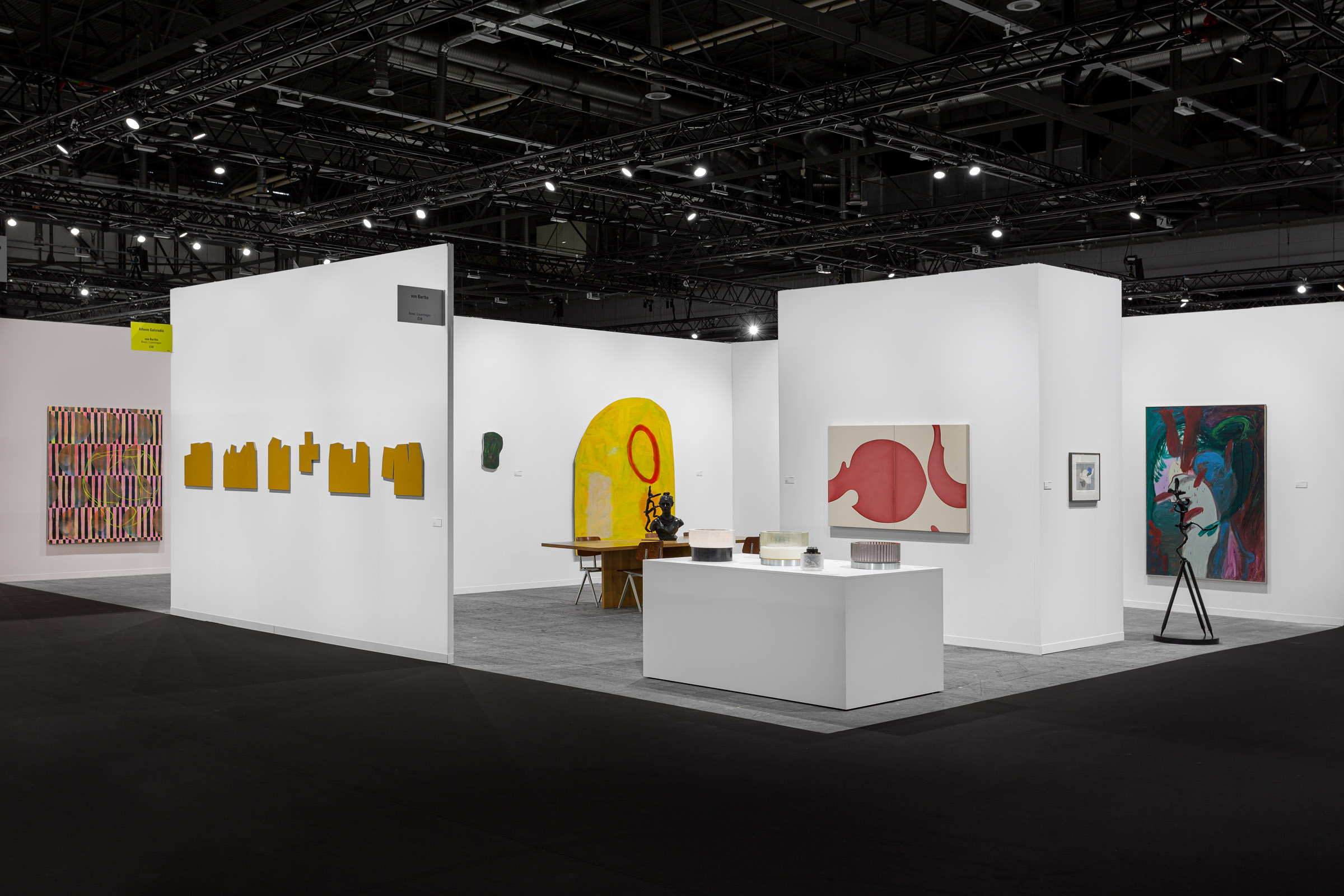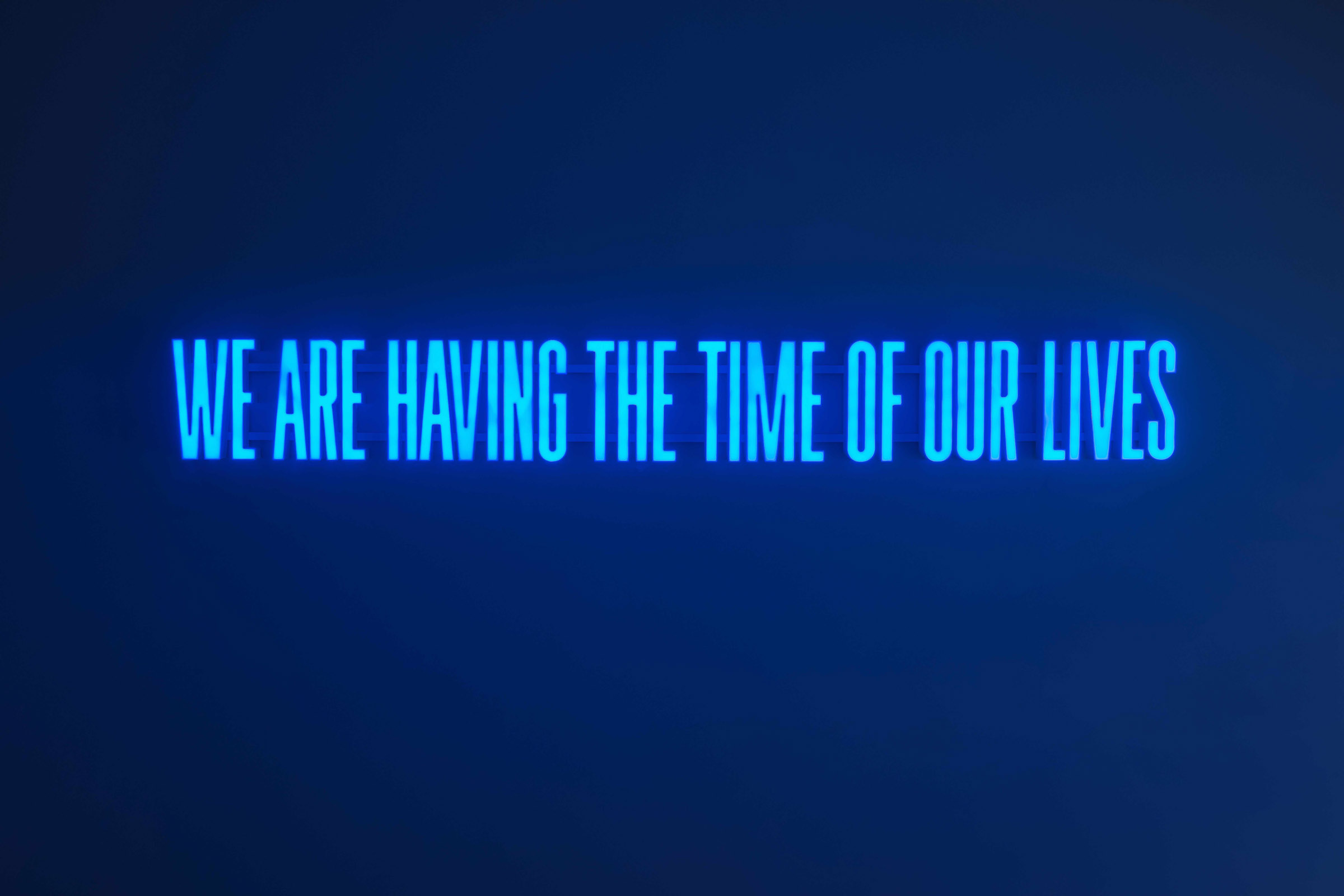Long Read: This is NOT art this is ART
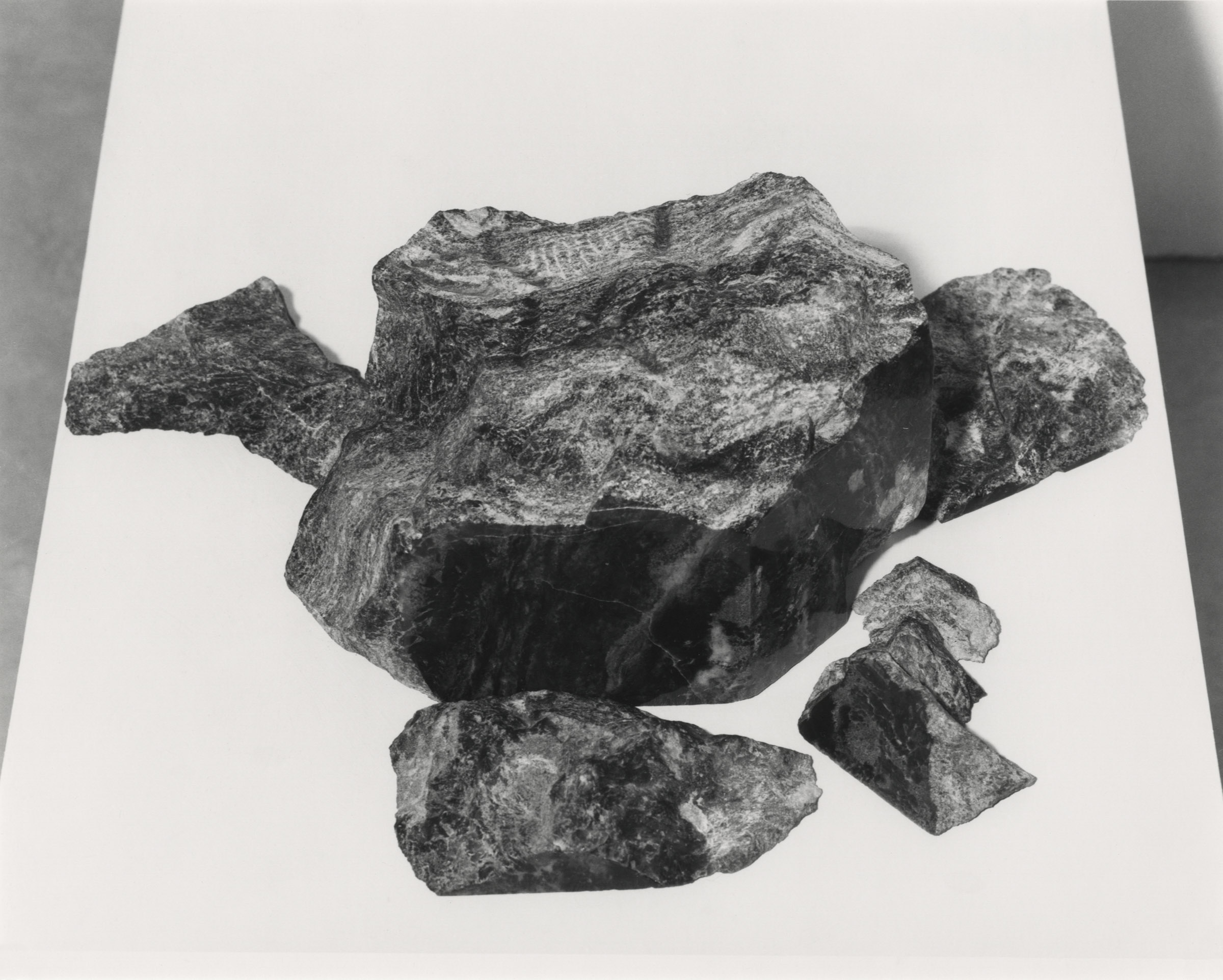
’Pataphysics, counterpoise and the tightrope in Barry Flanagan’s sculptural practice
Director of the Estate of Barry Flanagan; writer and curator, as well as Reader in Fine Art and Archives at University of the Arts, London
On the other hand
Art still
thinks it’s
special
I got ‘on the other hand’
from my father.
He would say ‘on the
other hand’ then, very
soon in his conversation
he would say ‘on the
other hand’—like
the hands of a boxer
about my ears.
I was afraid of him,
but I inherited the tactic.
It’s like putting a pound
butter dab into shape.
It’s how I play.
What could I possibly
have done?
NOTE Fill out script
with those impossible
letters from people
apparently hoodwinked
into a fantasy relationship
with radio or TV.
Barry Flanagan
SCRIPT, 1971 [1]
Spirals, triangles, squares and along other lines, Barry Flanagan spoke in circles, at times elliptical, blunt, mysterious, profound, unpredictable and on occasion, hilarious. He was convivial and anecdotal, and in equal measure, quiet and silent, even in company. He would continue the thread of a conversation over lengthy periods, sometimes returning to it months or even years later, when his companion had most likely long since forgotten about it. The processes of orientation and disorientation, and the recognition and subversion of identifiable systems are established strategies of aesthetic encounter. Flanagan’s play with reversal and repetition were intrinsic to his practice.
This introduction will, I hope, illuminate the paradoxically consistent approach Flanagan had to his life-work-attitude, like a palindrome falling in on itself. It may seem contradictory, superficially, to an outside observer, especially with the popularly characterised assumption we hear all too often: ‘Oh, Barry Flanagan, the artist who made hares … I didn’t realise he was the Flanagan of sand and other soft materials!’ But reader, remember the hare and if, and when, you see one, look carefully at how it moves. Hares appear suddenly, as if from nowhere, changing direction mid-course, and are momentarily, instantaneously still. They are the only creature to avoid fire and smoke by running through it. The hare connects worlds, human with animal, time and culture, through primordial symbolism and the shaman. The hare for some cultures is ‘the man’ in the moon, the sign of the spring equinox, the symbol of fecundity and the promise of growth. This writing intends to mirror the hare’s movement with shifts of direction and subject. Reader, be on alert!
The notion that Flanagan in 1979 made a sudden switch from abstraction to figuration, and from then on worked exclusively in bronze, is wrong. His practice never excluded material, he continued to work with clay, cloth, printmaking, drawing, photography, film, light and sound throughout. He considered a distinction between abstraction and figuration to be arbitrary and absurd.
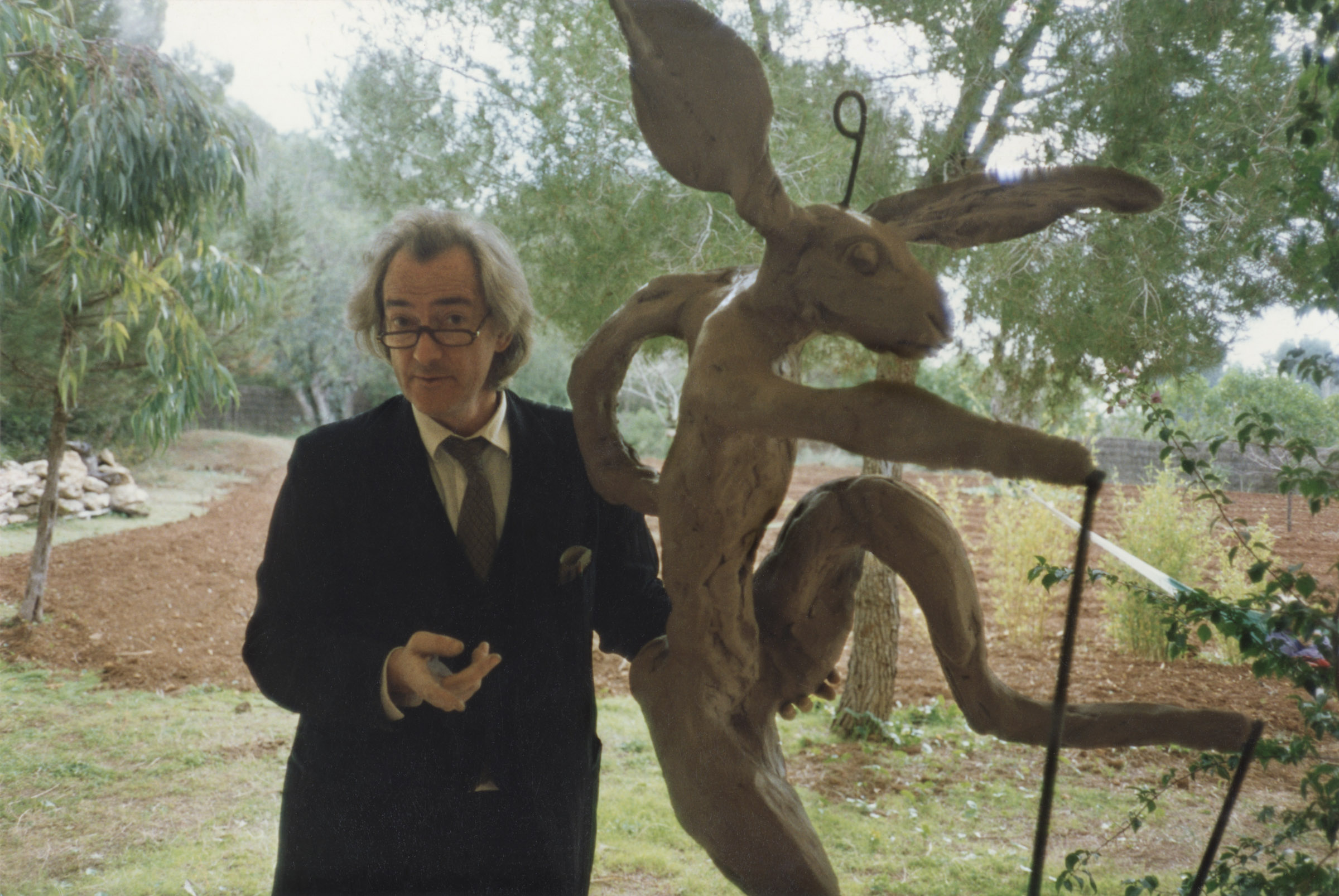
Photo, AB Fine Art Foundry
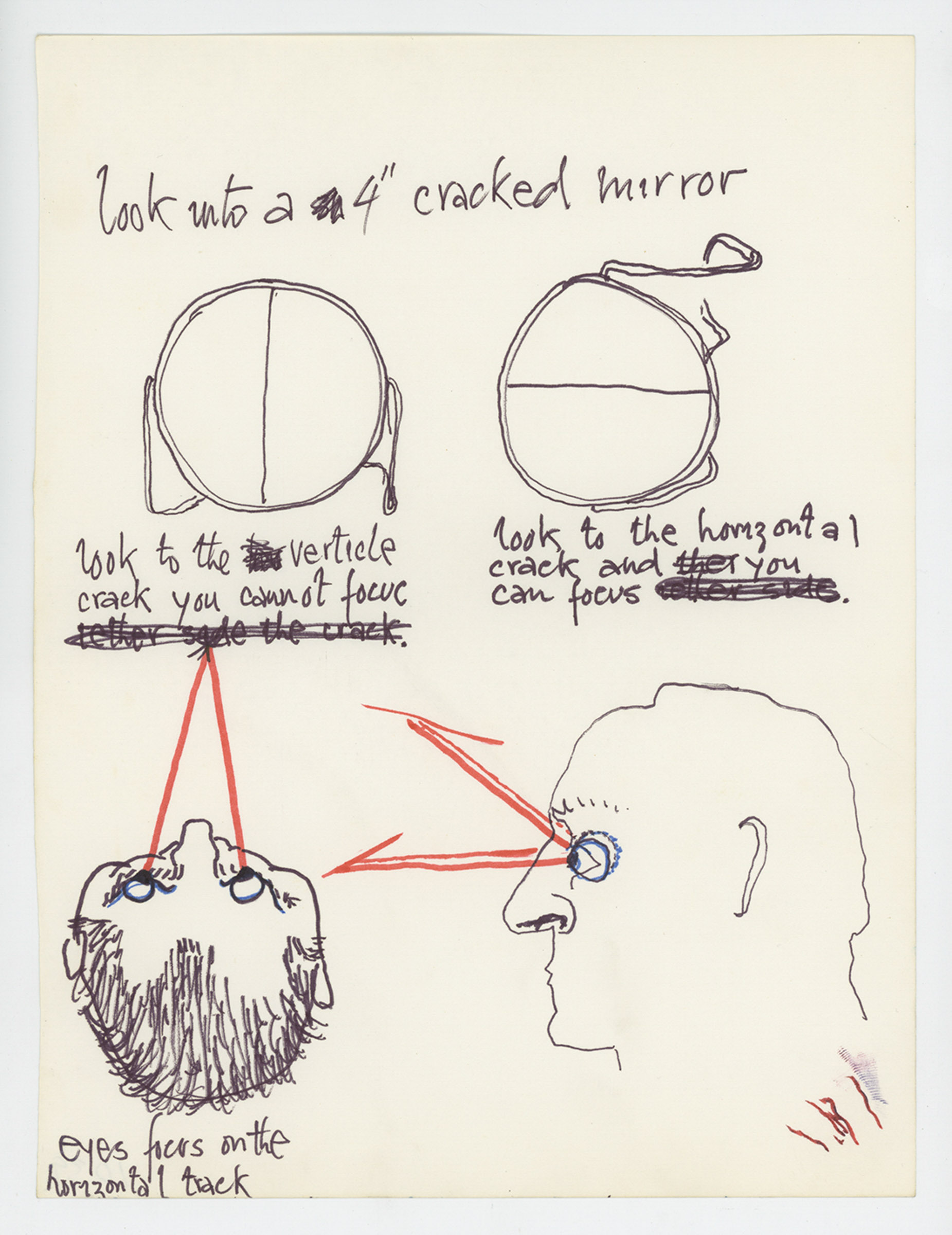
diagram aug '67, 1967
Red, brown & blue pen on paper, 25.9 x 19.6 cm
The sculptor Gavin Turk met Flanagan over a number of years. If it isn’t noted down, remembering the first time people met can be elusive, but both recalled it was most likely at Chelsea School of Art, where Turk studied and Flanagan did occasional teaching. Turk remembers that Flanagan ‘didn’t do a lecture in an ordinary way. It wasn’t a straightforward thing.’ He describes how a conversation with Flanagan was like ‘talking in kind of riddles, you always went into a parallel universe somehow. Or I did, I ended up going into a parallel universe when I spoke with him. I couldn’t tell whether it was just to do with the fact that he couldn’t help it. Or whether it was something that he was just enjoying, enjoying the ride, whether he actually had another mind … but that he chose not to use it.’ [2]
This purposefulness, evident in the way he spoke, showed itself in all aspects of Flanagan’s life. He did not consider art ‘special’, any more than he believed that social or political responsibilities should be separated from everyday decision-making processes. In other words, engaging with art’s practice was part of living life. A fluid exchange with what it is that constitutes our being-in-the-world. For instance, Flanagan had a sartorial dress sense, before Gilbert & George commodified tailored suits as components of their practice. (They were friends from student days on the Advanced Sculpture Course (1964–66) at St Martin’s School of Art). He wore a suit irrespective of whether he was in the studio or a restaurant. He disliked shoes, wore sandals with socks and appeared impervious to the seasons. He didn’t differentiate between summer and winter outfits and similarly he didn’t separate his studio from his living space and maintained this fluidity in London, Ireland, Ibiza, Amsterdam, Paris and at the Chelsea Hotel, New York. The impact of ’pataphysics, defined as ‘the science of imaginary solutions’ by symbolist poet and playwright Alfred Jarry, was constant. Another important touchstone came via Michael Flanagan, his eldest brother, while Flanagan was at secondary school. This was Zen in the Art of Archery by Professor Eugen Herrigel who describes his studies of Kyudo, a form of Japanese archery in which the monk becomes at one with the bow.
Jarry’s character Ubu Roi (the King of Poland, aka ‘no-place’ ‘no-where’) is represented by a spiral on his belly. This denotes actions, like forwards and backwards, and definitions of form and feeling, the interior and exterior lines between pattern and shape. The spiral can be clockwise and anticlockwise, simultaneously. It suggests the umbilical cord and symbolises our attachment to the physicality of our material existence and to work. Flanagan sought the spiral form in nature, through snails and other molluscs, and their fossils in mineralogy and geology. He paid close attention to differences in durability, colouration and the vein-like striations that trace a mollusc’s life, giving distinctive texture and colour. Like natural paintings, rocks and building materials have their own characteristics that needed to be seen as such, aided and assisted through his hand and eye, enabling the beholder’s perceptual encounter with the material itself, rather than imposing a new logic.
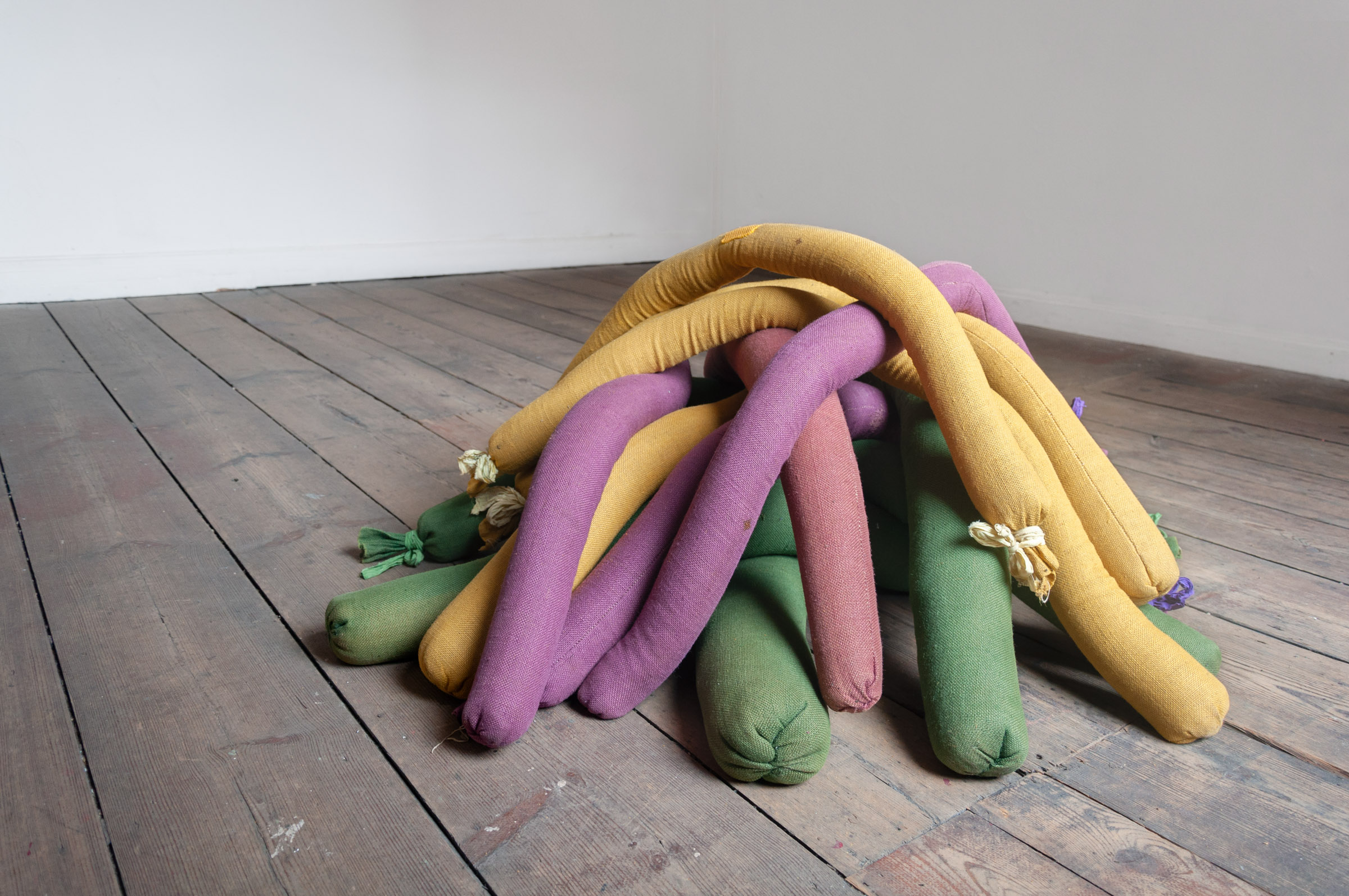
heap 3 '67, 1967
Hessian, cloth and sand
45.7 x 152.4 x 152.4 cm (Installation dimensions variable)
Photographed at Barry Flanagan Light pieces and other works, &Model, Leeds, 25.05.–17.06.17

Photo by Jeny Bremer
When Flanagan visited a site proposed for a sculptural installation, he walked along its extended perimeter, anticlockwise and clockwise, at least three times. He had an attenuated familiarity with layers of landscape and legends unfolding, from Celtic and Neolithic folklore to the myths of the ancients, Egyptians, Greeks, Romans, Indo-European, Chinese and Japanese. Following the destruction by students of the sculpture made for the city of Cambridge as part of the Peter Stuyvesant City Sculpture Exhibition in 1972, Flanagan reassessed sculpture’s function, public interface and notions of the monument.
The idea of monumentality and, conversely, the implication of its loss is clearly visible in the very small sculpture, Monument (1973) made from Connemara marble, with its distinctive green colour. The scale and low-level placement of the work requires its viewer to look down towards the earth, to be made aware of their own relative verticality. Connemara is a region of Galway in the west of Ireland on the Atlantic coast. Ireland is known as the Emerald Isle and the colour green has many layers of symbolism in Celtic lore, ’pataphysics and popular culture. The latency of Celtic mythology in Flanagan’s thinking resonated from his love of Ireland and Irish roots, and his understanding of a people whose language offers a richness closely tied to the natural landscape. The correlation between landscape and language allows for a more magical way of seeing the world, than for instance through English and other Latinate languages. The Irish artist and writer Manchán Magan lists forty-five different words for stone, for instance ‘ailce’ is a large moveable stone, ‘spiothog’ a little stone, ‘cabhas’ are stepping-stones across a stream, whereas ‘clochran’ are those across a ford. There are names for uses and locations, binding stone, stones in walls and plug stones.[3] Most words were in use until the 1970s, but they are slowly dying out with fewer and fewer speakers. Although he himself did not speak it, Flanagan was very aware of the loss to cultural understanding that would ensue.
In 1975, Flanagan relocated his family from London to Northamptonshire, seeking ‘more rural pursuits’ akin to those he experienced as a child. Once there, he worked a lot with local Hornton stone. He disliked the conventional manner of stone carving and selected blocks with what he described as a ‘geography’, to which he could respond. ‘Soliciting stability in the stone’ was his aim.
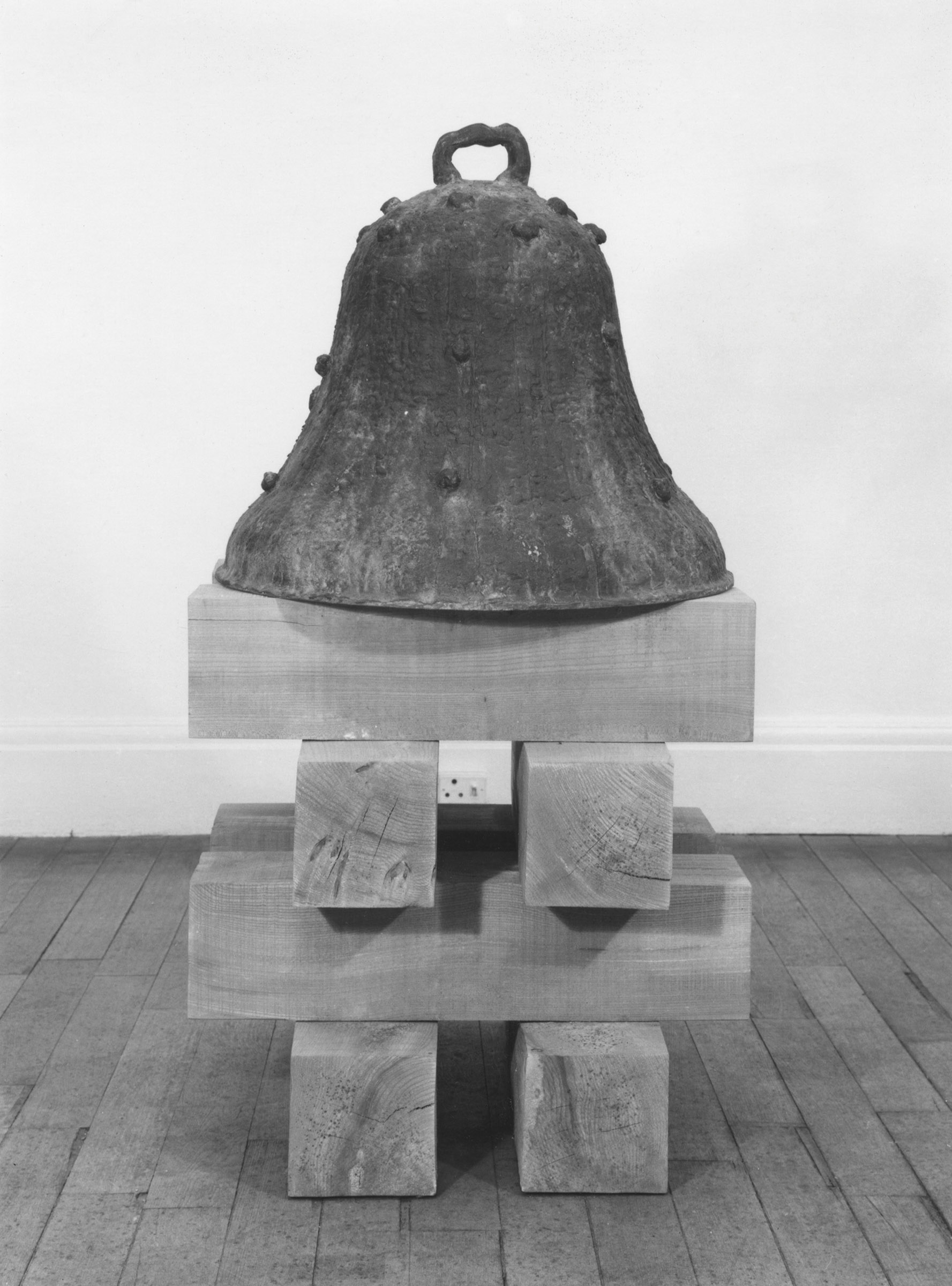
Eight Bells, 1980
Bronze on elm wood blocks
111.8 cm high
Ubu of Arabia (1976) deftly juxtaposes a recognisably Ubu-esque form made from Hornton stone with the canvas hat brim of the spliff-smoking Ubu. It is a careful balance of rough-hewn and polished stone, showing the nuanced range of colour achieved by the finishes. The polished stones could have been a building material. Flanagan’s knowledge of building materials echoes here from the use of canvas, or cloth to fabric tents, determined by the nomadic lifestyle present in ‘Arabia’, and the use of stone in those permanent settlements. Nomadic existence, of course, returns us to Ubu himself, self-styled ‘King of nowhere (Poland)’, as well as to Flanagan’s own itineracy. Perhaps this explains, in part, Flanagan’s attraction to the islands, Ireland and Ibiza, both populated by a flow of conquerors that became enmeshed in the land and its peoples’ psyche.
The lumpen, bread-like form of dream of marble (1975), made of two Hornton stones, is positioned on fourteen, rough-hewn blocks of elmwood from which small pegs protrude. These are assembling joints, mortise and tenon, similar to those used by the ancient Egyptians in early examples of brickmaking and methods of breadmaking. dream of marble takes on the form of soft clay, before it is moulded by man into brick, or compressed by nature into solid stone. The two stones, the smaller on top, show traces of reddish-brown clay, pointing to their colour variations and are inscribed with signs or rune-like symbols, such as found on standing stones in ancient sites. Packed with layers of history, meaning and experience, dream of marble allows the viewer to engage with the relationships between the components of the sculpture. Durationally, it reverses the process of marble’s origin from clay to stone. The experience Flanagan gained from working on a building site and later, briefly, in a bakery continued to inform his knowledgeable and tactile use of materials. Underlying too is the close connection between bread, life and trade, and ‘bread’ as an English colloquial synonym for money.
Sourced from Edgehill Quarry, it was the Hornton stone’s pyramidal form which first attracted Flanagan, but the ‘nose’ insisted itself upon a nose in repose (1977). He described it as ‘civil weaponry at peace’.[4] The spiral form appeared latently, and he assisted it to surface. The stone rests on a stack of twenty sandblasted elmwood blocks, repurposed storage pit props obtained in Brackley, an area rich in farming, land management and cultivation. The numerous archaeological traces of the Iron and Bronze age as well as the Roman and Anglo-Saxon eras, of fields, enclosures and pits used for grain storage show a land richly connected with its inhabitants. Stack 1, ’67/68 (1967/68) is how he titled a grid-like structure made of individually cloth covered bundles. The form recurs throughout his oeuvre, in different configurations and materials. The leaping hare (1979) the first hare, a gesso-painted plaster cast, is elevated on a painted wooden ziggurat, a pyramidal structure. The hare is in an edition of three. From the same mould, he made the plaster leaping hare, embellished, 2/3 jan ’80 (1980) which was sized and gilded ‘on the first full moon of 1980 (full moon and a lake are conducive to the laying of gold according to the Chinese.’ The third hare was cast in bronze. The casting process in its current sophistication is an iteration of ancient processes, from earth to object, from molten metal to tool, artifact and sculpture.
Eight Bells (1980) is a bronze church bell, cast with the runners still visible. It stands on eight blocks of wood, similar to the rafters of a bell tower. This powerfully evocative sculpture commemorates the city of Dunwich on the Suffolk coast. Once a thriving port, the Anglo-Saxon capital of East Anglia, replete with churches, gradually the sea destroyed most of its churches through prolonged coastal erosion. There are myths that at certain tides the sunken bells of the eight lost churches can be heard to chime. The geographic fact of its evolution makes it a primary base for meditations on time, memory and decay. Eight Bells was made after Michael Flanagan’s yacht was lost at sea during the Observers’ Transatlantic singlehanded race in 1976, interweaving the personal into a mesh of histories to render a most fitting homage. This is how Flanagan considered the vibrance of a monument’s potency.
- Header image: Barry Flanagan, Monument, 1973, Connemara marble, cut, polished & carved, 15 x 34 x 30.5 cm
- Barry Flanagan Statement, ART SPECTRUM, Group Exhibition, August 11 – August 30, Greater London Arts Association, & Arts Council of Great Britain, London, (n. p.)
- Gavin Turk, Friday 19 February 2021.
- Manchán Magan, Thirty-Two Words for Field, Gill Books, Dublin 2020.
- The Tate Gallery 1978-80: Illustrated Catalogue of Acquisitions, London 1981.
https://www.tate.org.uk/art/artworks/flanagan-a-nose-in-repose-t03059Sources are Barry Flanagan Estate London and author’s discussions with artist.
